This week, South Korean President Park Geun-hye's second candidate for prime minister, Moon Chang-keuk, pulled his name from consideration, following outrage over comments he made about imperial Japan's occupation of Korea. This follows the collapse of the candidacy of Ahn Dai-hee, a former judge who made an income of $1.6 million after his return to the private sector late last month.
For the president, the loss of two candidates for prime minister has hit hard. Polls show that approval ratings for the president have declined sharply over the past few weeks, and are at their lowest point since Park assumed office. The loss of political capital so early in the administration portends significant difficulties in the coming years for Korea's government.
But beyond the polls, the withdrawals of both candidates illustrates a growing problem in Korea: the exacting expectations of political candidates for office. This is a real challenge, both for Korea as well as for many established democracies like the United States. Due to the rallying effect of the Internet as well as an aggressively adversarial political culture, candidates are now put under an unbelievable amount of scrutiny.
That scrutiny would seem useful; after all, politicians holding ministry portfolios or senior government positions are entrusted with powers that few others in society wield. But as the bar has moved higher for candidates, the number of candidates that might have a shot of making it through the political system has narrowed.
The United States has not been immune to these kinds of political purity tests. We can see this effect most keenly on the Supreme Court, where jurists who hope to one day be nominated by a president avoid stating a controversial opinion on, well, anything. Take Elena Kagan for instance. Despite being the dean of Harvard Law School,
➜ Continue reading...
The New Wave of Global Journalism
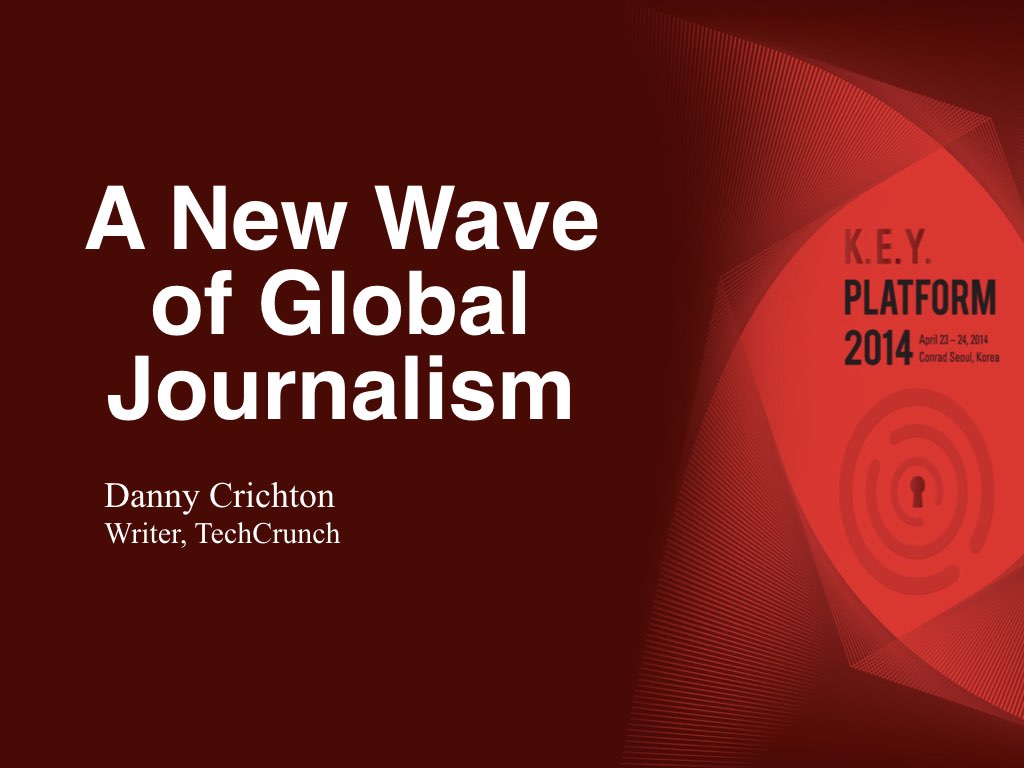
By Danny Crichton
I want to thank the organizers of Key Platform 2014 to speak today. My name is Danny Crichton, and I am a writer at TechCrunch, writing about startups in South Korea, Asia, and in Silicon Valley. Many people seem to think that much has changed over the last 50 years when it comes to journalism.
A History of
Little Change

That notion is false. Despite the incredible technological progression made in all kinds of industries like commerce, social communications, enterprise storage, security, and information retrieval, news content and journalism more generally hasn’t changed all that much over the past 50 years. I realize I am being a bit contrarian, but let me show you the evidence.
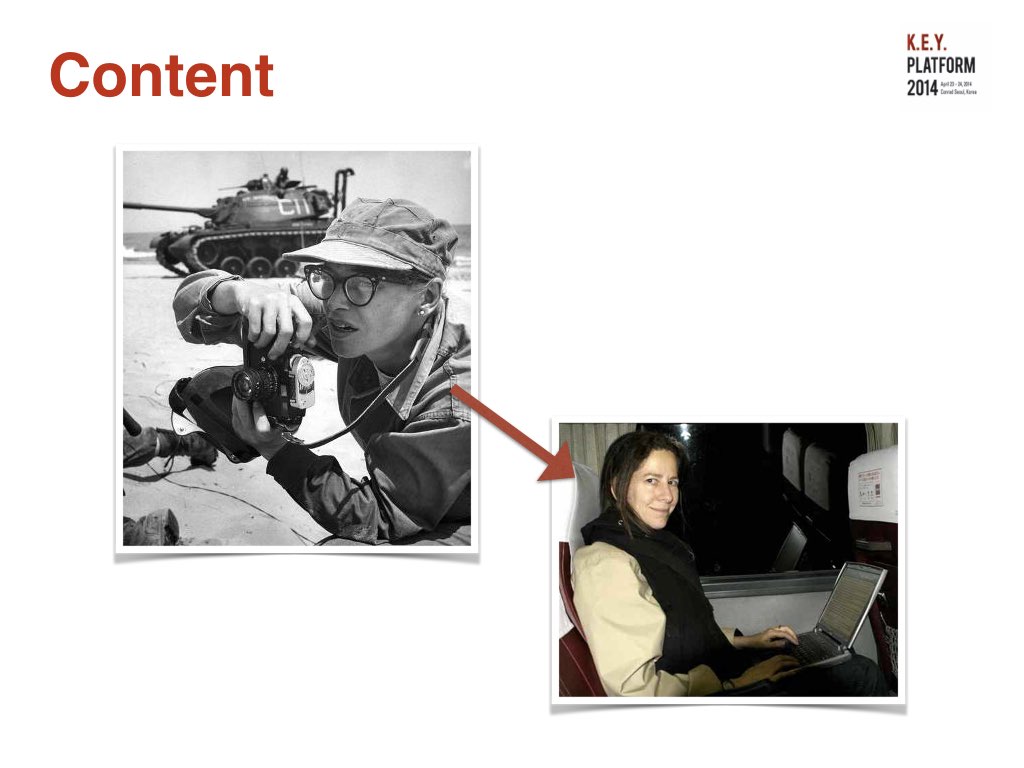
For instance, content today for news sites is developed much the way it has been for decades. Journalists around the world interview subjects, take photos and video, write up stories or maybe edit a short documentary, and then post it to the web. While technology has certainly made this process more streamlined through online editing tools, and the demands placed on journalists in producing content are higher today, the basics of the profession have really not changed all that much. Great content is visceral, engaging, interesting, and timely. That formula works as well during the 1960s as it does today.
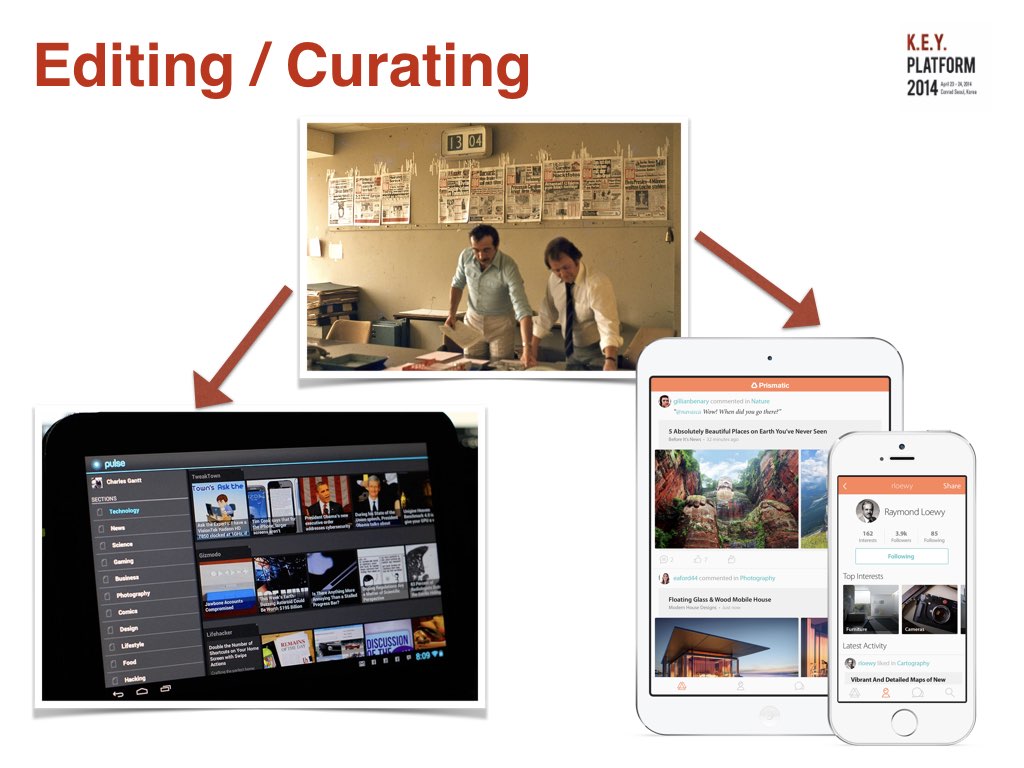
The way we edit and curate our work has changed a little bit, but there has been far less interesting results here than many presume. Before the internet, the number of writers of content was manageably small, and a small group of people called editors acted as gatekeepers for content. If you could get an editor at the New York Times interested in your story – you were published. There was definitely a bias here,
➜ Continue reading...
The news has been all over the press – Stanford's admissions rate has now reached 5%, and its implications for college applicants is clear: everyone is screwed.
This is false. As everyone knows about admissions, the aggregate admissions rate has almost no value to any student, since every student is bucketed into different groups with radically different acceptance rates. Athletes aren't facing a 5% acceptance rate, nor are legacies or development cases. Intel Science Talent Search winners aren't facing such long odds to success.
This thinking that everyone has an equal chance reminds me a lot of startups, where talk of a "lottery" persists. This is also false. Startups have uneven probabilities of success, much as applicants to college have uneven probabilities of success. People need to stop looking at an aggregate admissions statistic, or the chance of going from conception to a billion dollar company if they want to find success. The reality is, 95% of efforts are going to end in failure. The key is to find the reason why you should be disproportionately chosen, in applications and in a startup.
That said, despite the flurry of articles on admissions rates these past few days, there doesn't seem to be any depth of thinking about these statistics. Here are two questions I would love answered:
-
What is the makeup of the applicant pool? Admissions officials have been trying to increase the diversity of applicant pools for years through outreach events, etc. Are these programs working, and thus the applicant pools are becoming more diverse, or is it the opposite, that we are just getting applicants from the same groups we have always gotten them from in the past. You can't glean this from a single aggregate statistic, but it would seem to be really important, particularly since
➜ Continue reading...
Tried posting a quote from this article on Smithsonian Magazine about worker deaths in Qatar. I copied a sentence as I usually do when I post to Facebook, and was surprised to discover this additional text:
Read more: http://www.smithsonianmag.com/smart-news/over-900-workers-have-already-died-building-qatars-world-cup-facilities-180950088/#KfGyIi6xpuTPLdSD.99
Give the gift of Smithsonian magazine for only $12! http://bit.ly/1cGUiGv
Follow us: @SmithsonianMag on Twitter
Good grief! Not only do they force me to link to the article (which I might add, I had already added), but they included a link to their subscription page, and a Twitter reference to boot.
This is unacceptable. Why should someone who happens to see a headline on my news feed be accosted for cash? Wouldn't the best people to try to get to subscribe to a magazine be those who read the article and thought it was interesting.
You can see an interesting conversation about how to add this sort of feature to web pages here on StackOverflow. I was curious how a site could control your clipboard, since that would seem to be a major security violation. The trick, apparently, is to change the selection in the screen itself. Thus, when you select text, the Javascript adds additional content elements to the selection behind the scenes, so that when you copy and paste, the added text is copied as well.
Nifty. My question is, can we develop a means of stopping this manipulation?
➜ Continue reading...
The Startup Life

By Danny Crichton
Two Questions Today
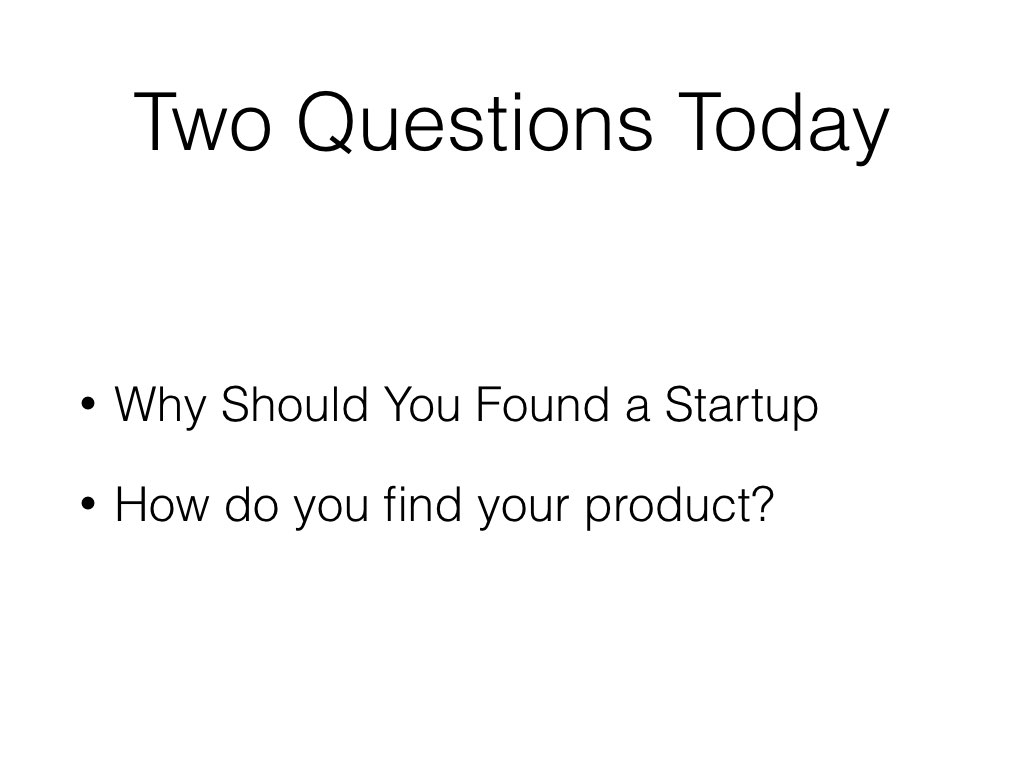
Why Should You Found a Startup
How do you find your product?
Quick About Me

Why Should You Start a Company?

Everyone is doing it
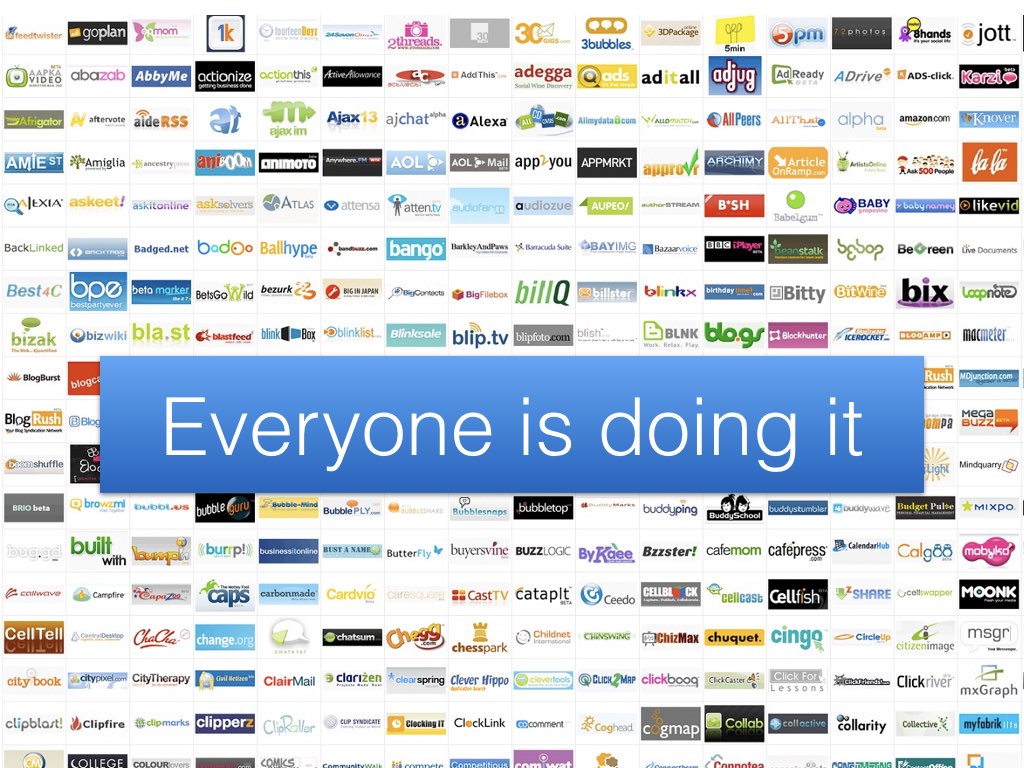
Today,
there are 5,500 companies
listed in San Francisco
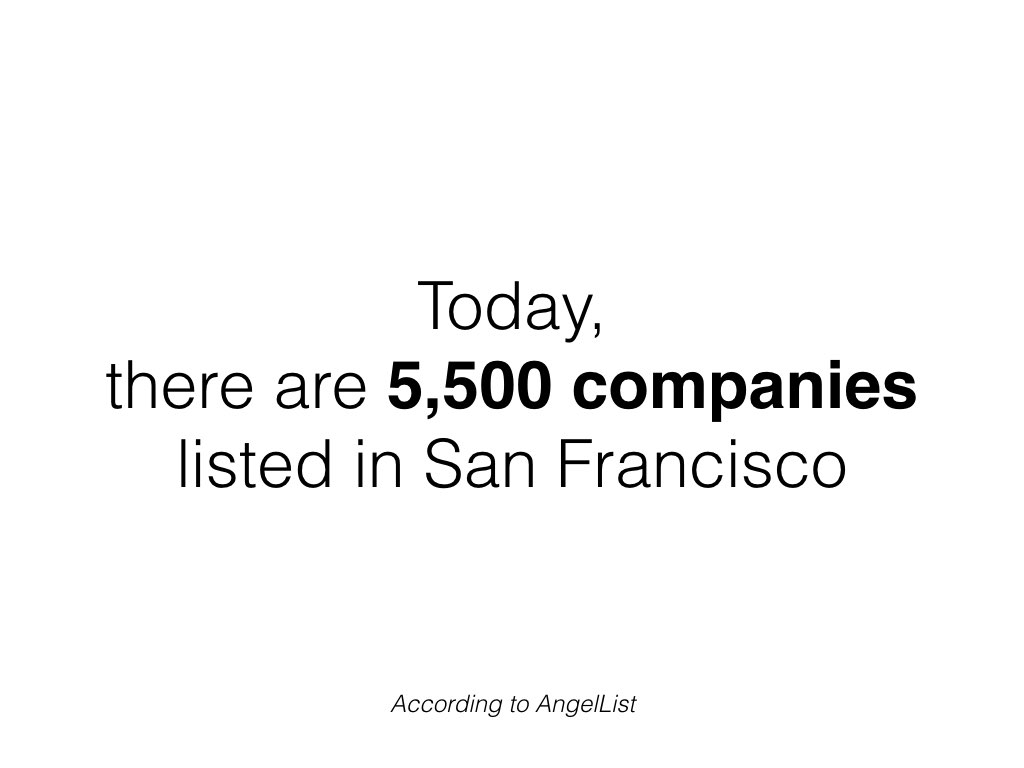
Approximately
50 companies
are worth $1 billion
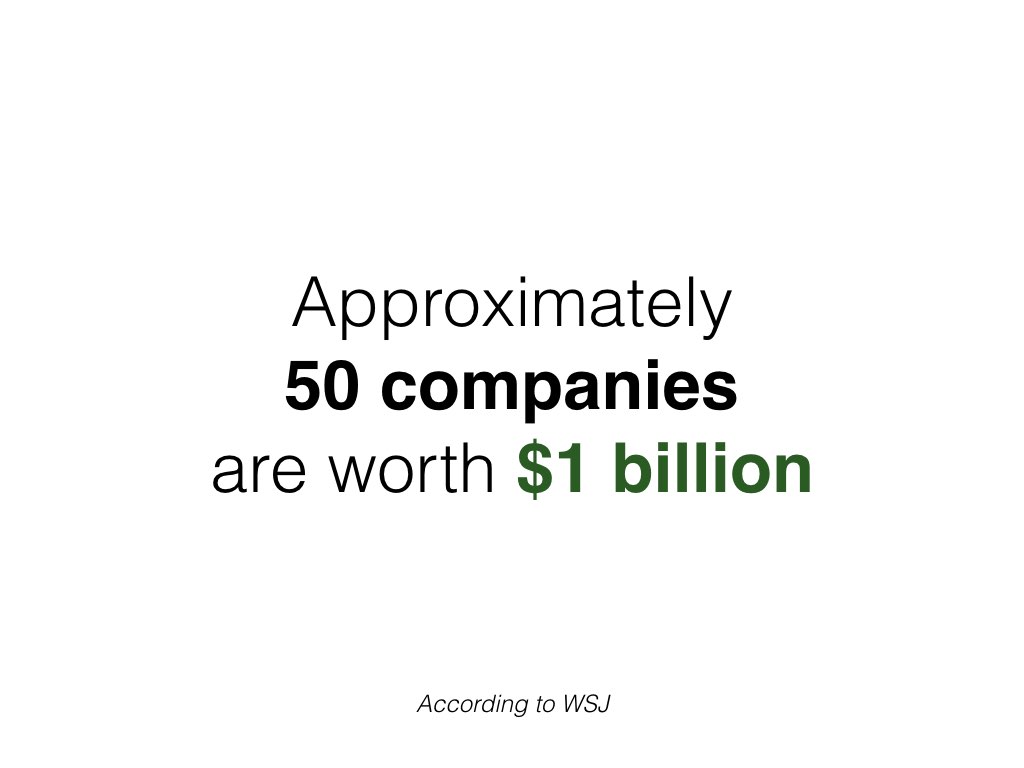
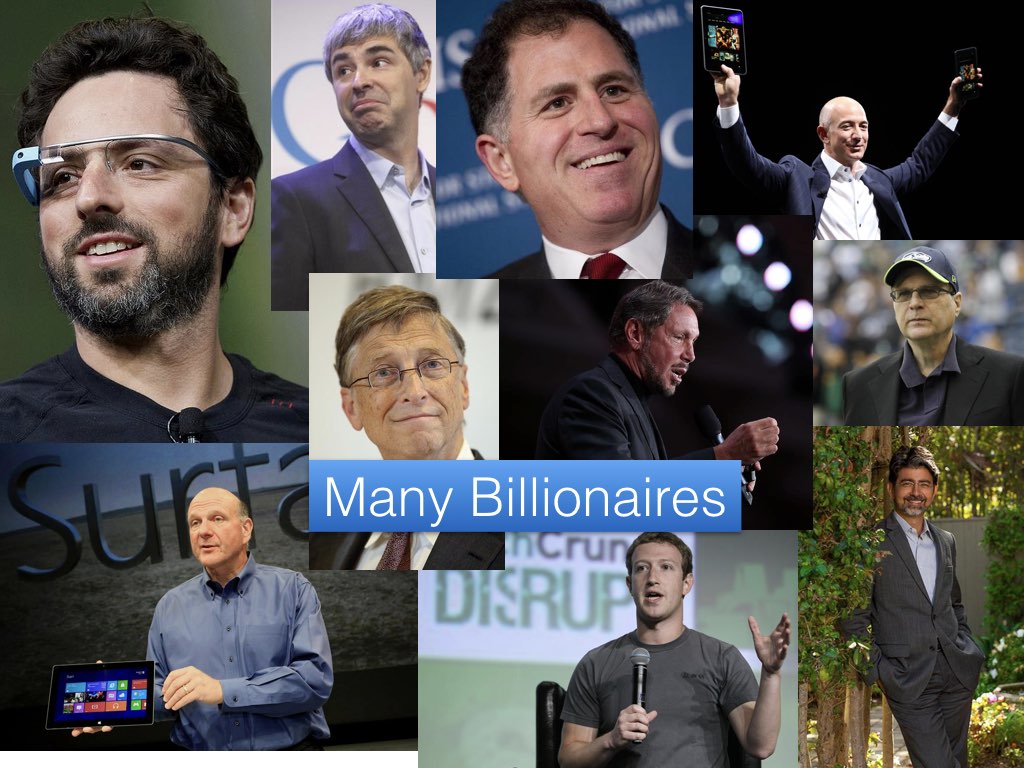
More importantly though…

Change the World

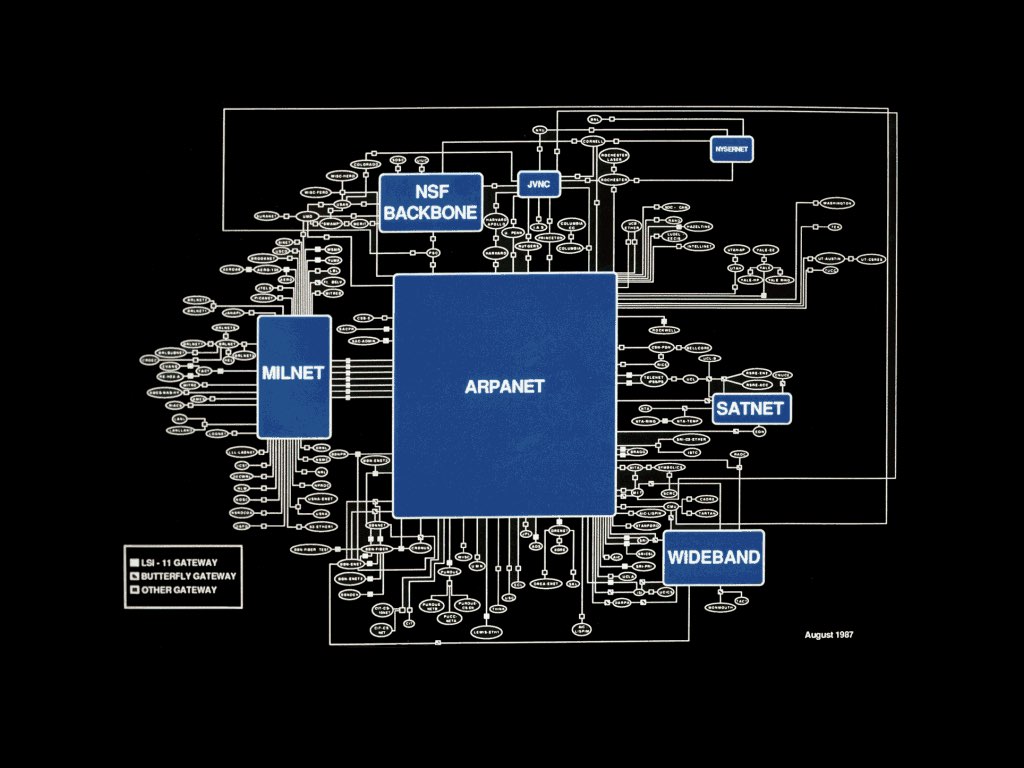
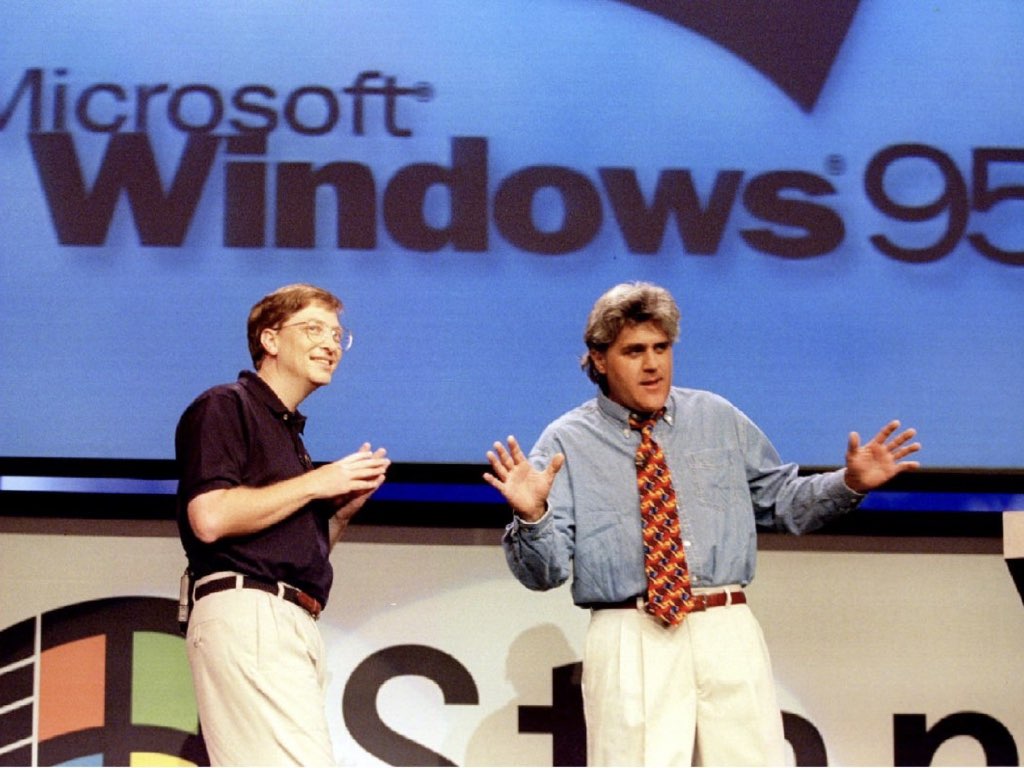
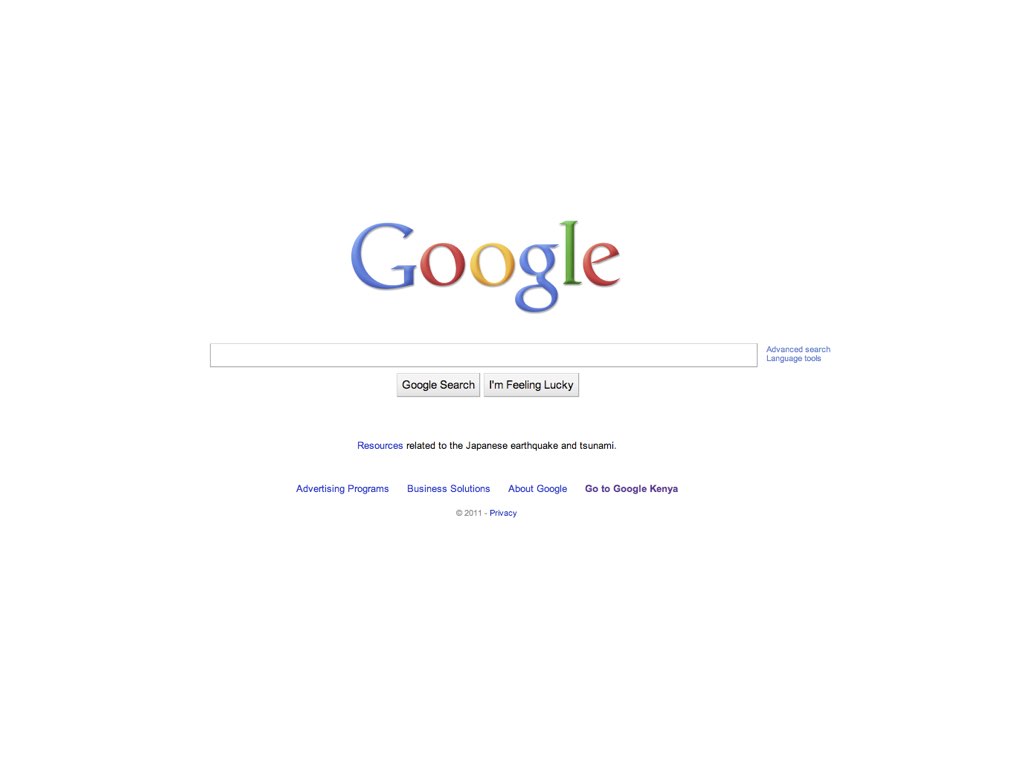
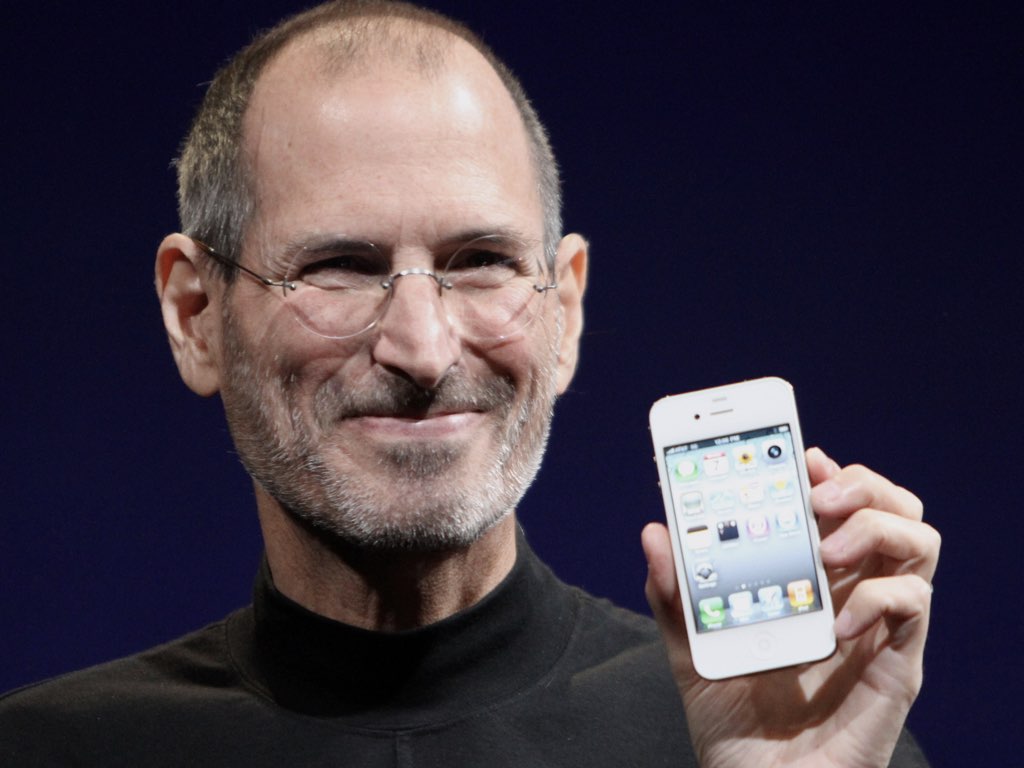
Computer Scientists are Changing the World
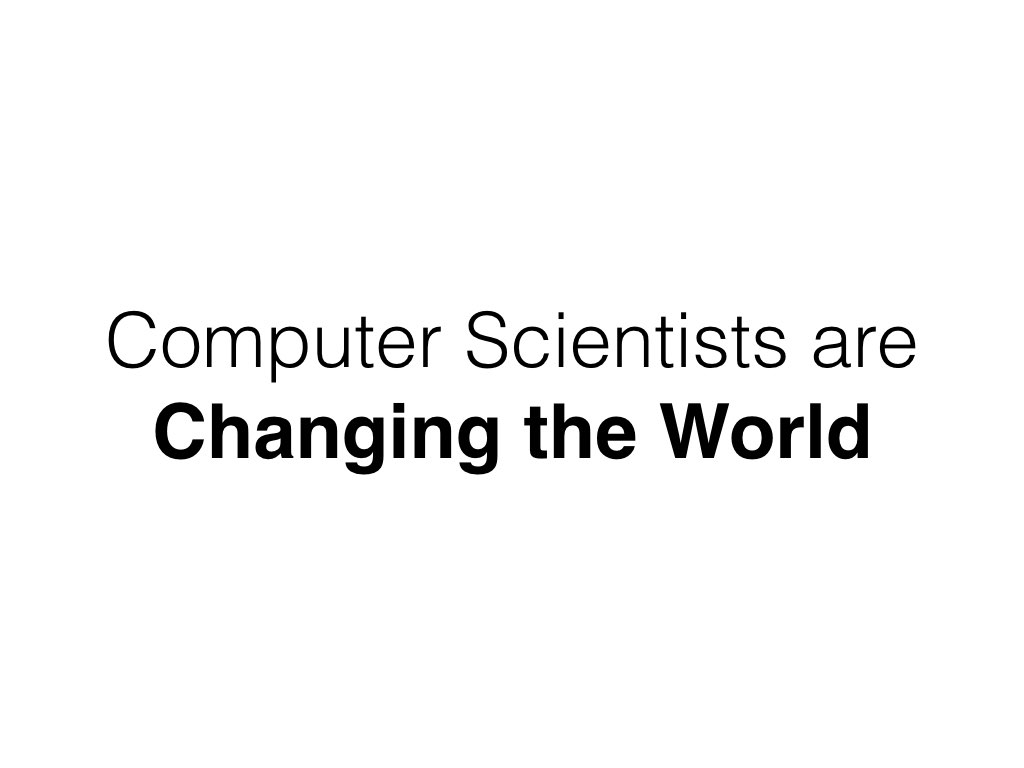
Question #2:
How do I
Change the World?
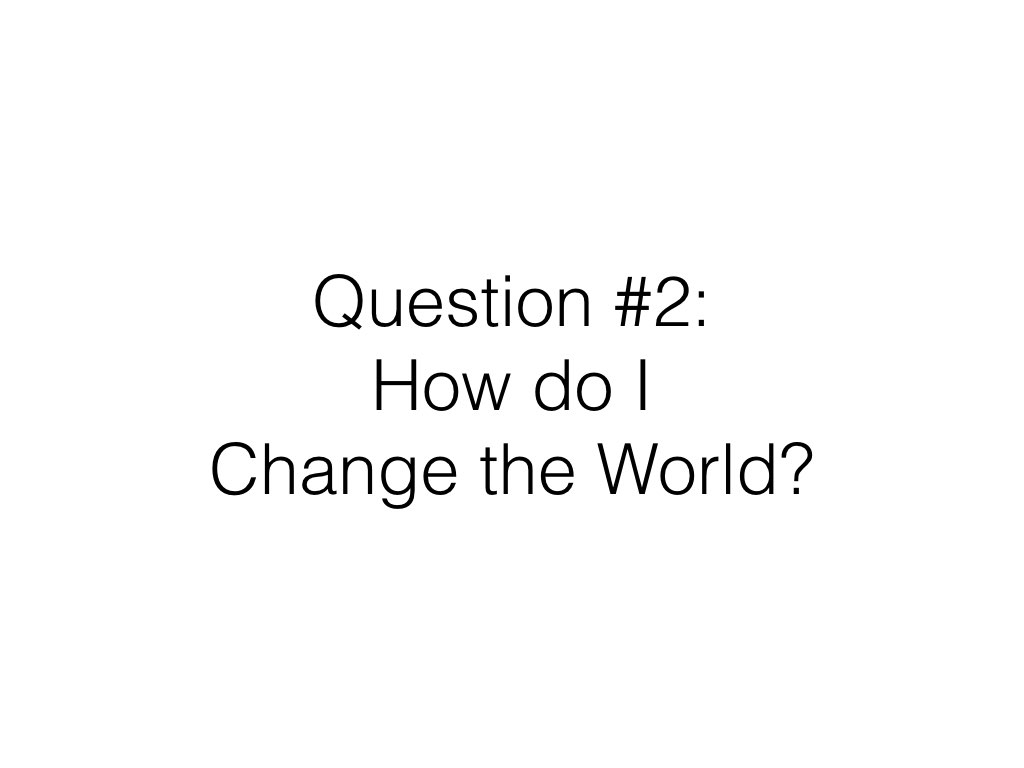
How do I find
great ideas?

Three Approaches
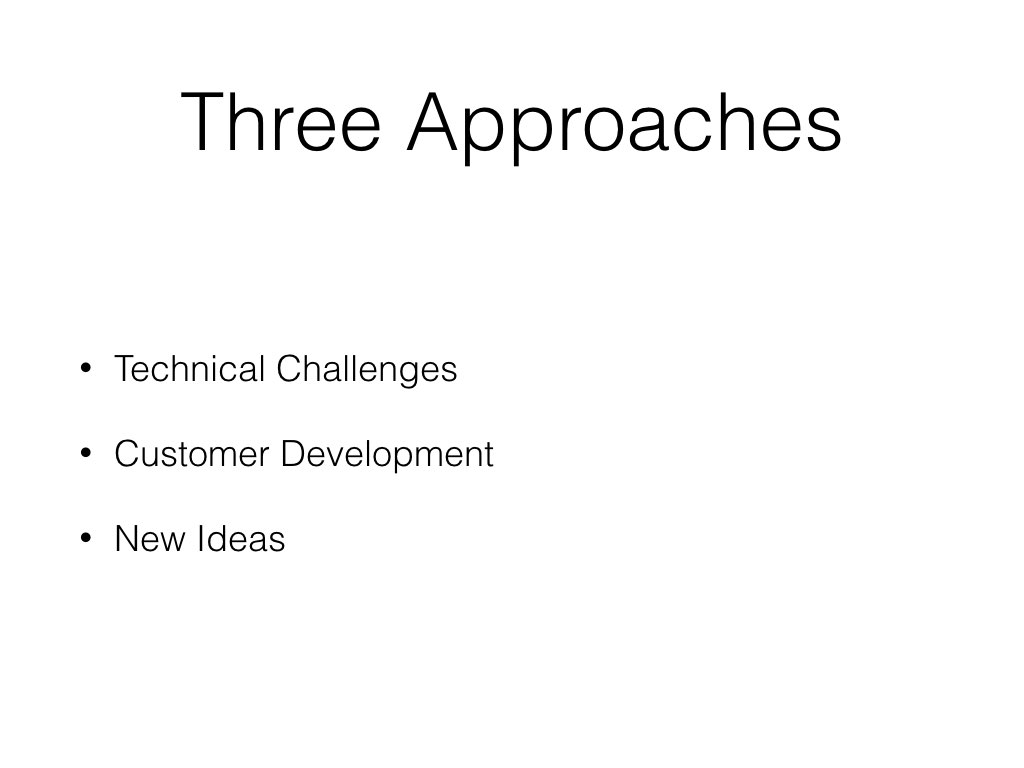
Technical Challenges
Customer Development
New Ideas
Technical Challenges
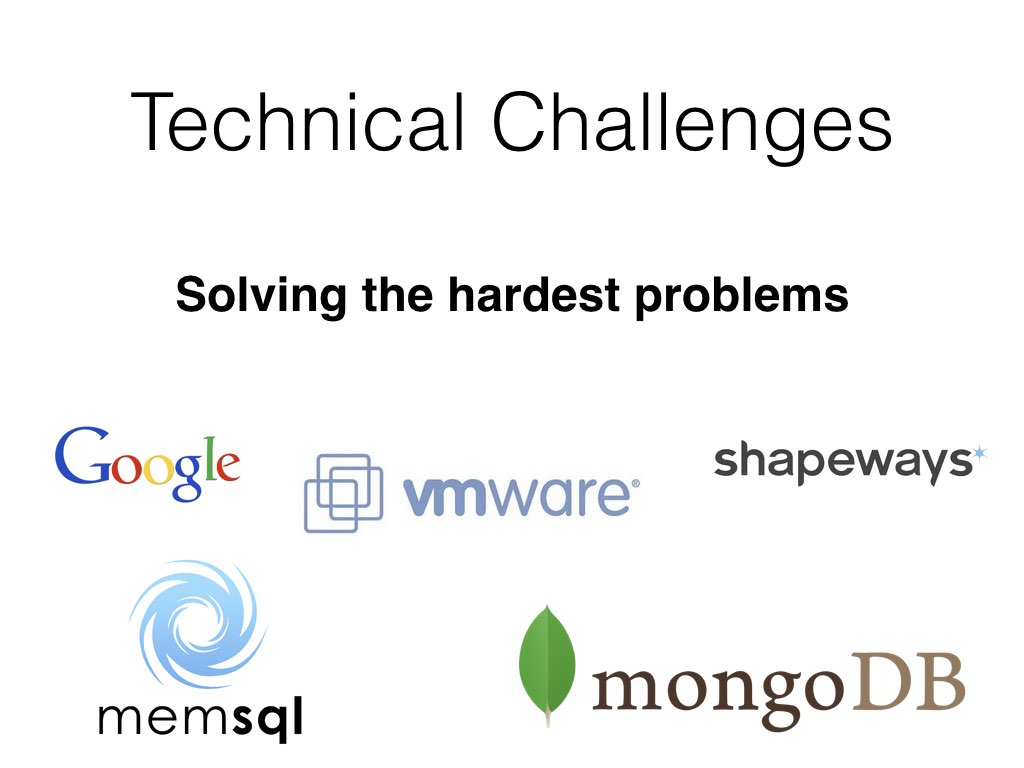
Customer Development
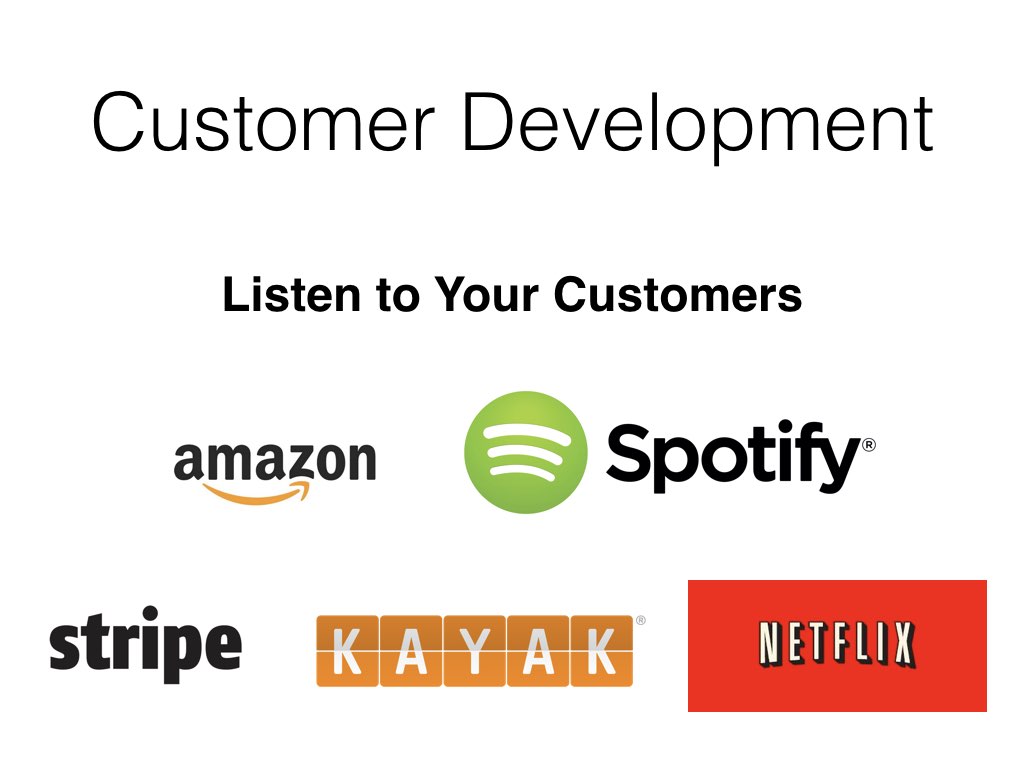
New Ideas
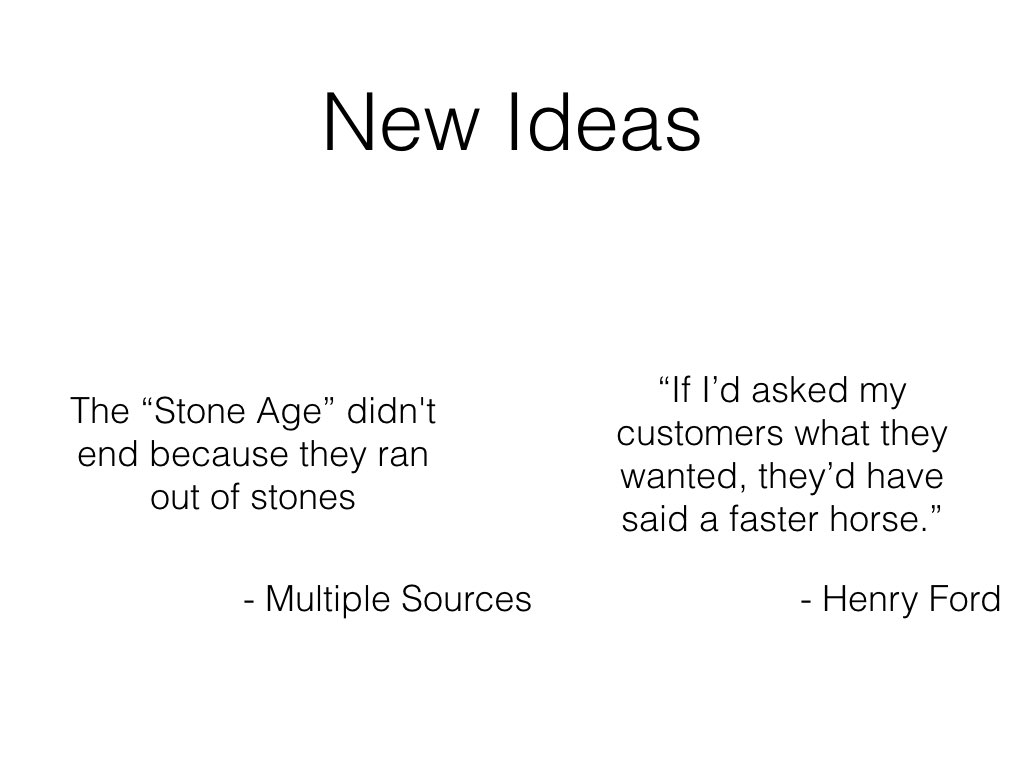
No matter what, build something you love
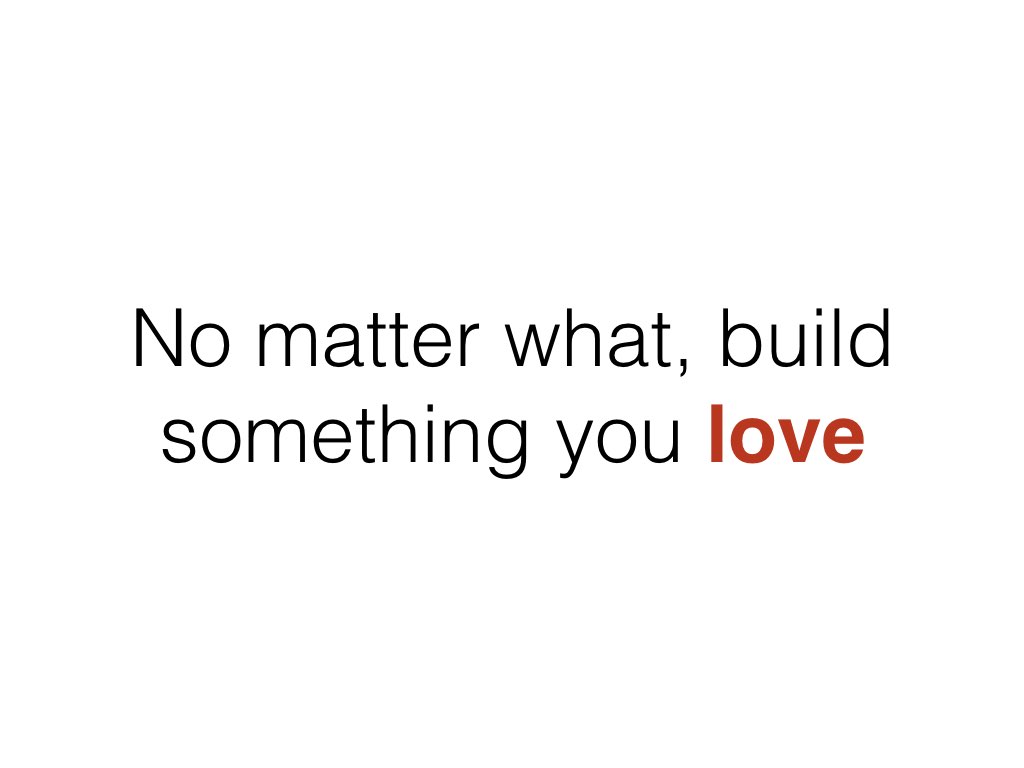
Questions

Silicon Valley Culture & Lifestyle
Work & Fun
What technologies do people use?
What is happening in the industry?
What should I do today?
➜ Continue reading...

Danny Crichton

What are Silicon Valley’s secrets?

Knowledge to
build startups

Today’s Agenda

Competitive Landscape/Market Maps
Customer Development
Metrics
Entering a Market
Competitive Landscaping

Competitive Landscape/Market Maps
Customer Development
Metrics
Competitive Landscaping is about finding what companies already exist in a given market

What is a
Market Map?

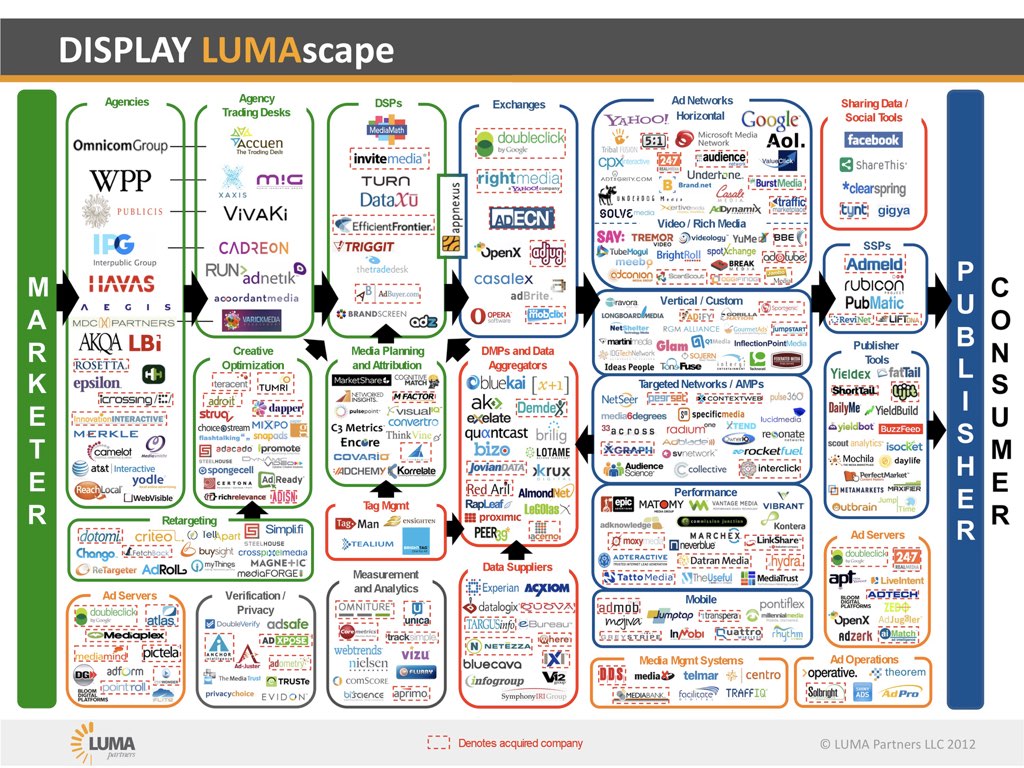
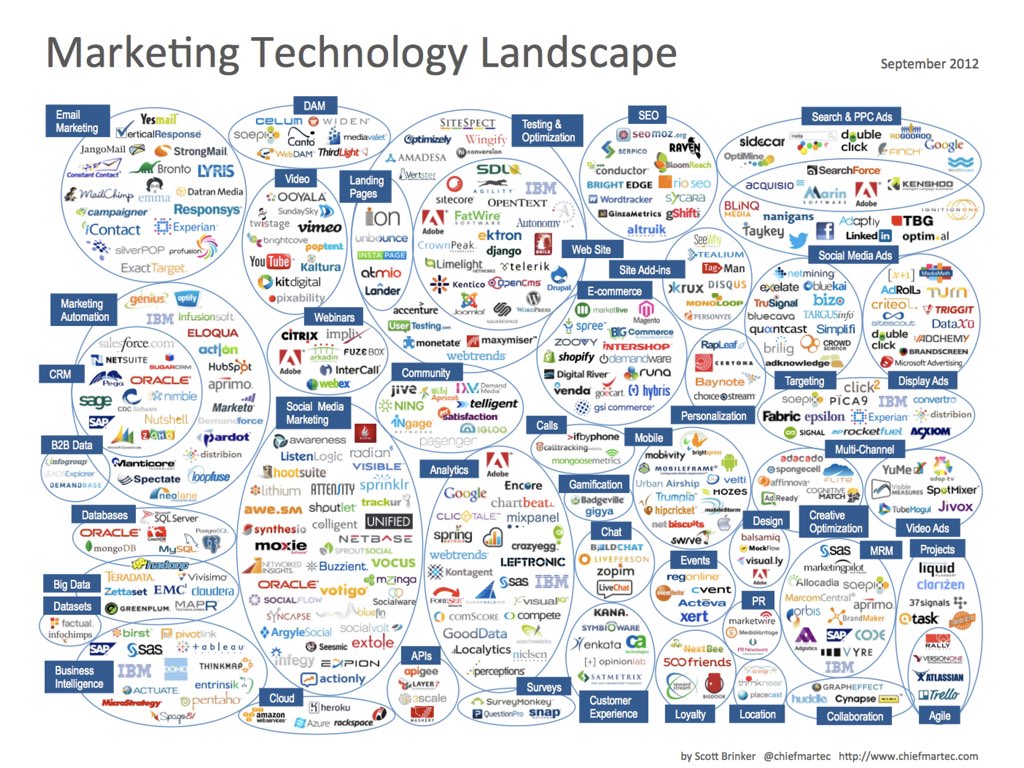
What is a
Competitive Matrix?



How do I find my competitors?

Example
Alternative Investing Startups


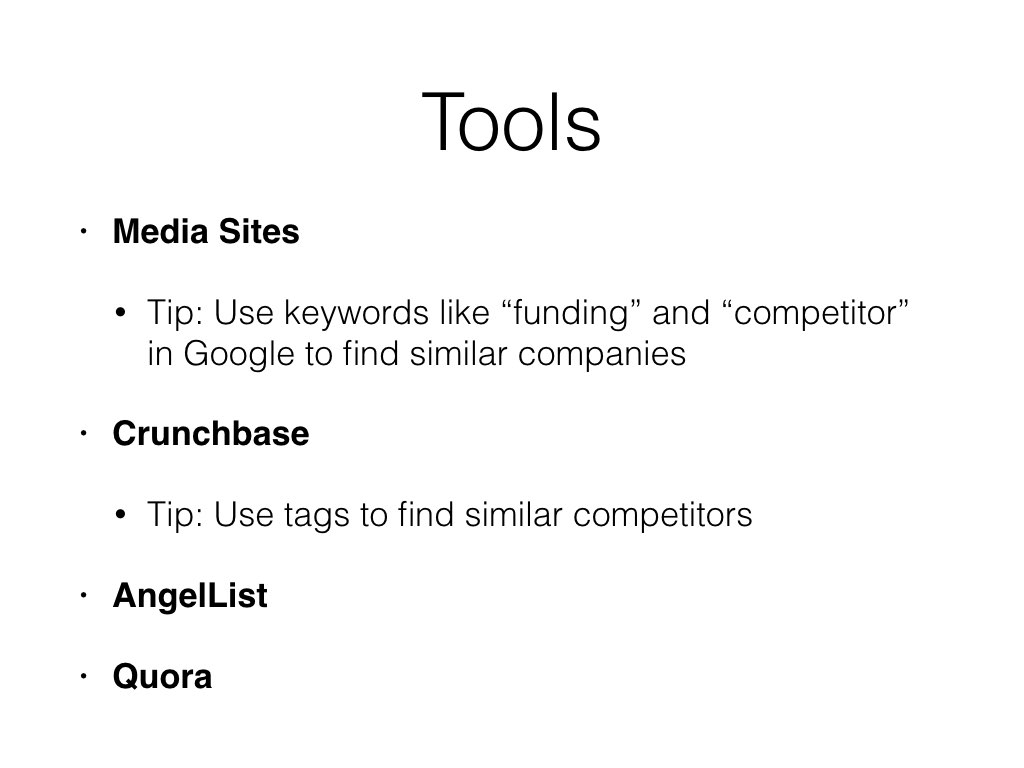
Media Sites
Tip: Use keywords like “funding” and “competitor” in Google to find similar companies
Crunchbase
Tip: Use tags to find similar competitors
AngelList
Quora
Entering a Market
Customer Development

Competitive Landscape/Market Maps
Customer Development
Metrics
Our goal:
Who wants
our products?

Most Important Decision Ever Made by a Startup:
B2C or B2B

For American Consumers:
Read Mary Meeker’s Internet Trends report

Key Similarities

Mobile first, mobile always
Entertainment is key
Influencers matter a lot
Key Differences
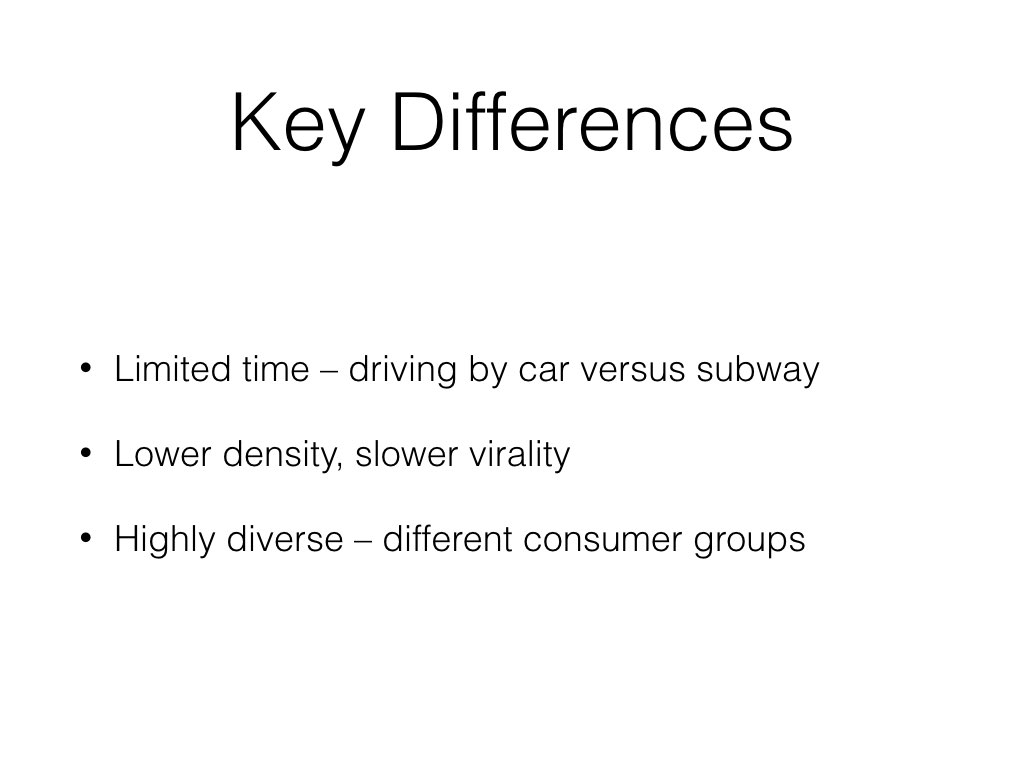
Limited time – driving by car versus subway
Lower density, slower virality
Highly diverse – different consumer groups
Building a Product
for a Consumer
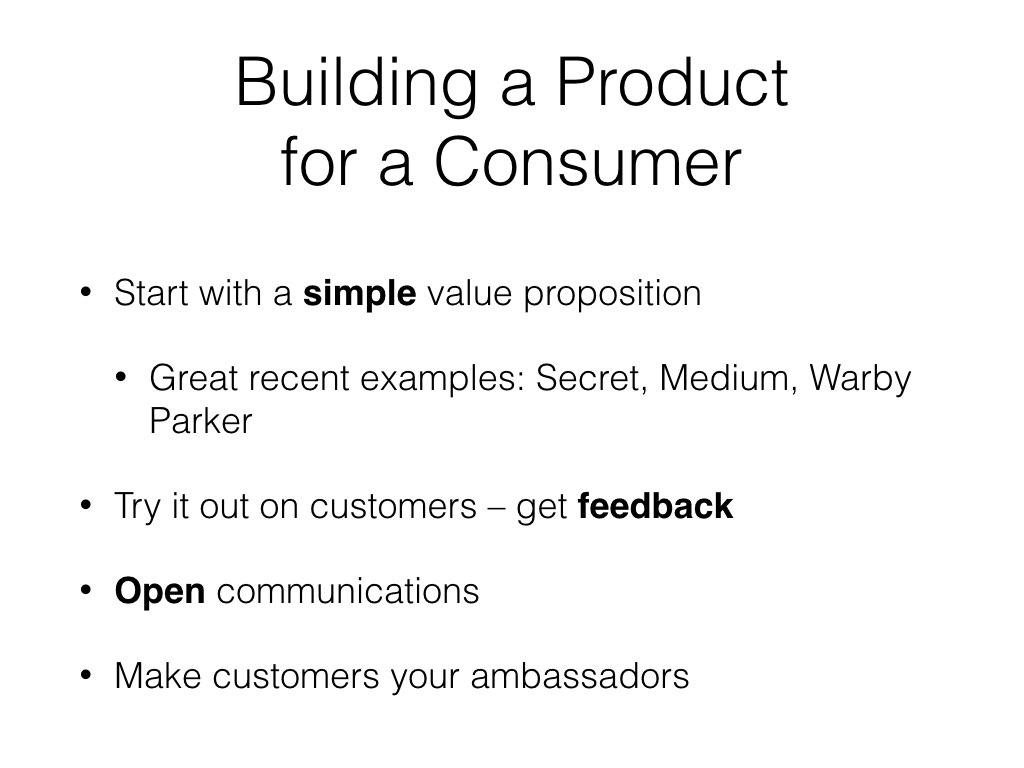
Start with a simple value proposition
Great recent examples: Secret, Medium, Warby Parker
Try it out on customers – get feedback
Open communications
Make customers your ambassadors
For B2B

Incredibly challenging for those outside of US
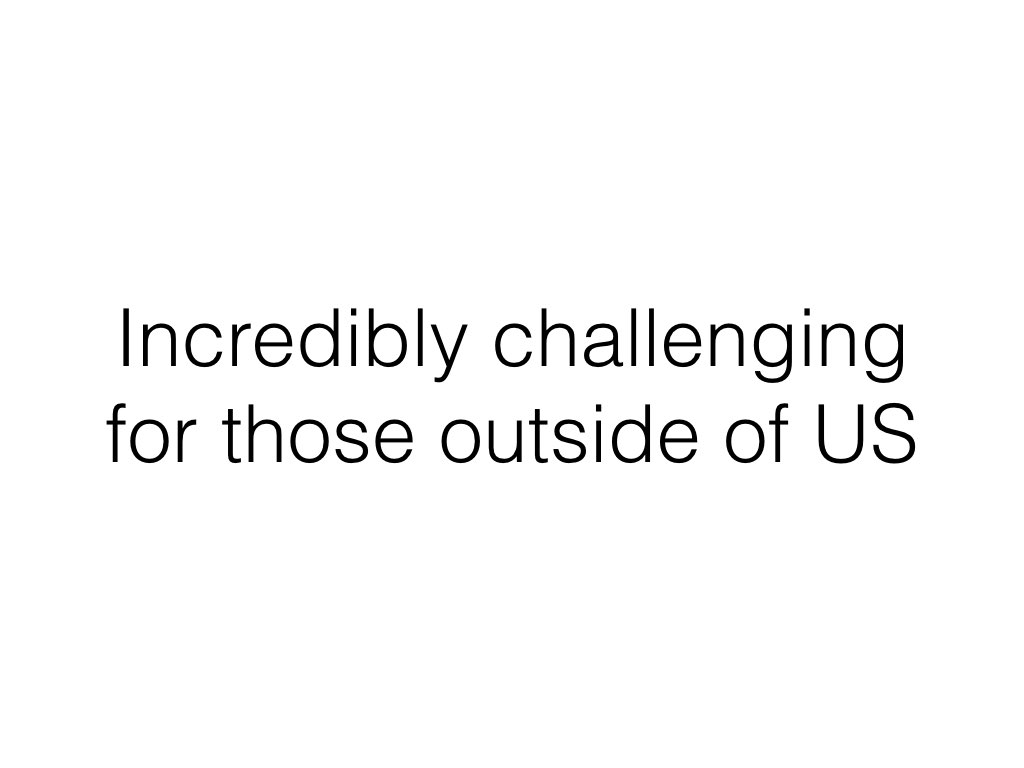
Things to think about
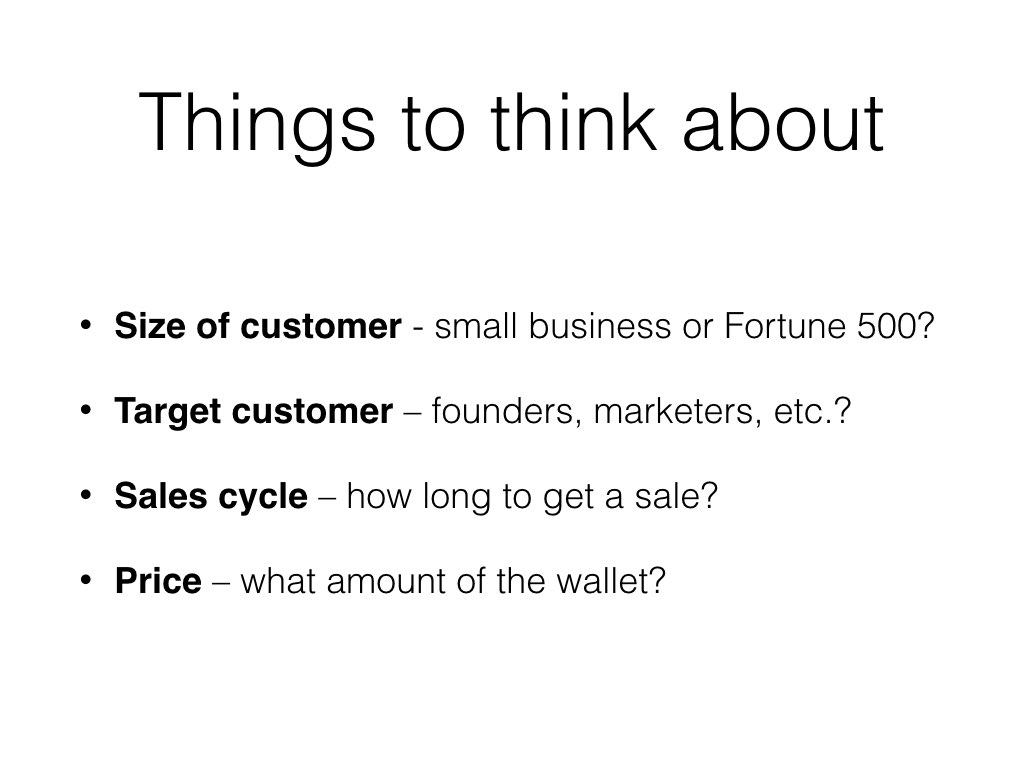
Size of customer - small business or Fortune 500?
Target customer – founders, marketers, etc.?
Sales cycle – how long to get a sale?
Price – what amount of the wallet?
Entering a Market
Metrics

Competitive Landscape/Market Maps
Customer Development
Metrics
Metrics are the key drivers of a business

Challenge:
What are your
target numbers?
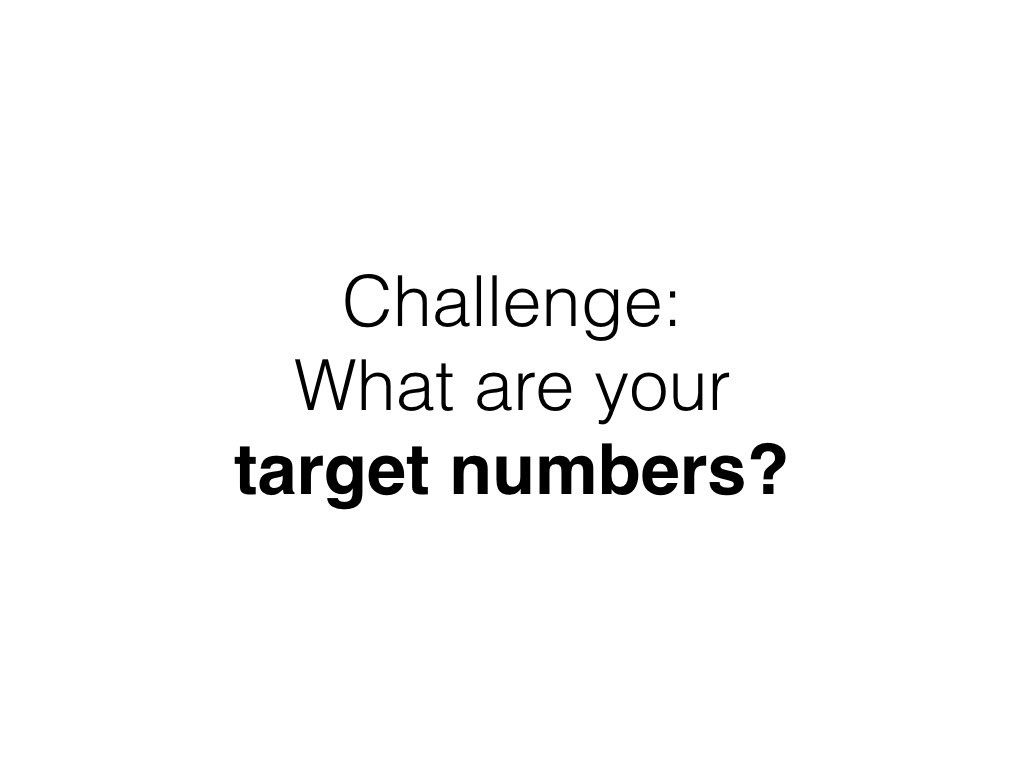
10 Metrics
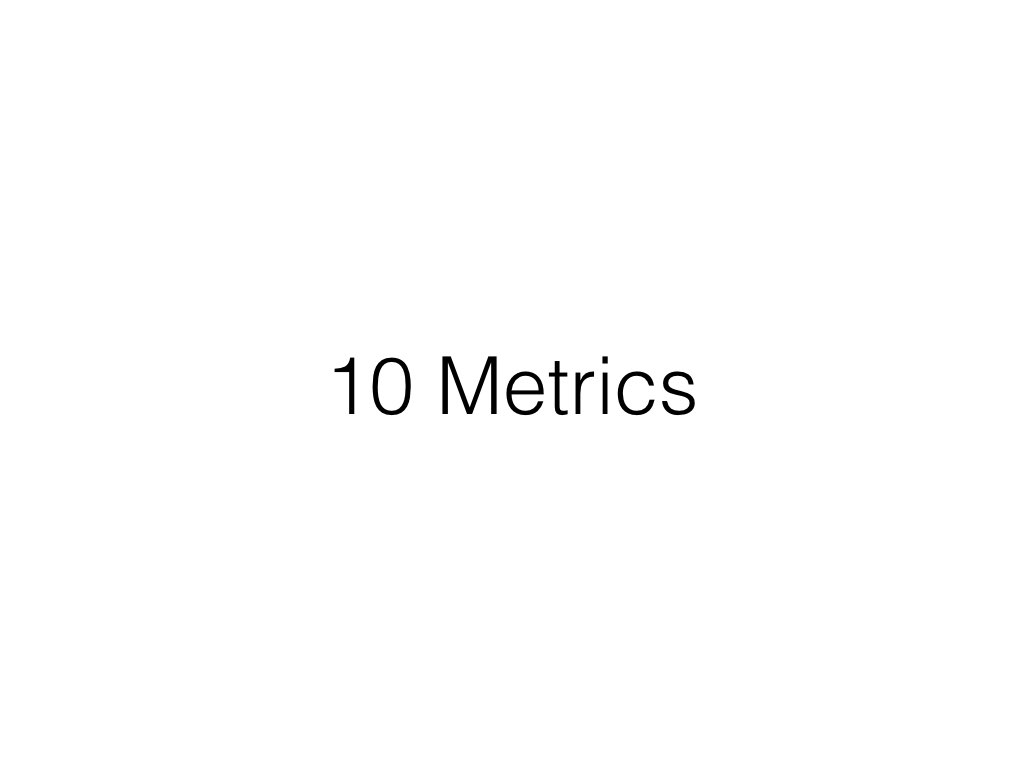
Growth Rate

But when you start out, it should be 7%

Revenue Run Rate
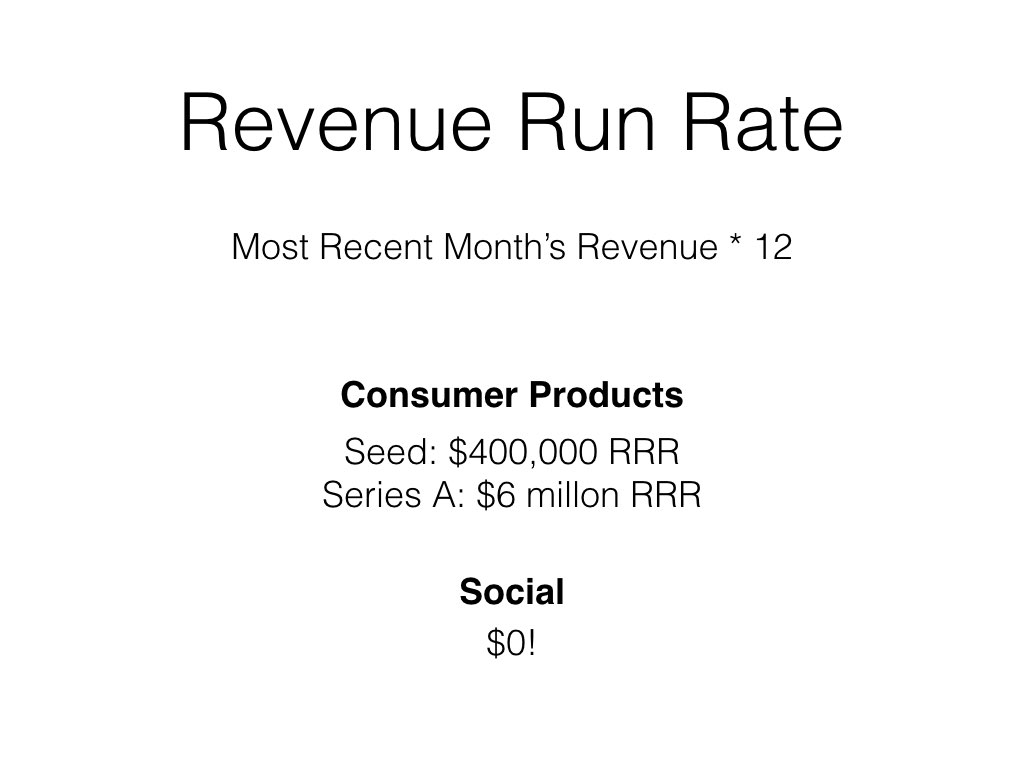
K-Value

Cohort Analysis
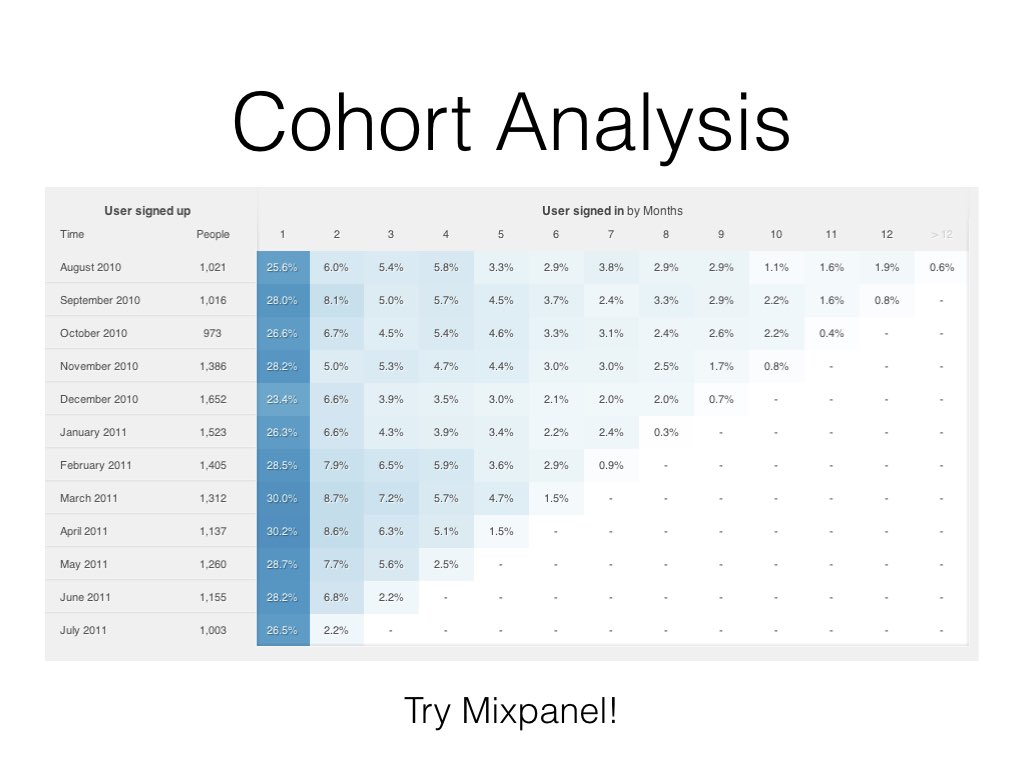
Cost of Acquiring a Customer

Basket Size & Order Velocity
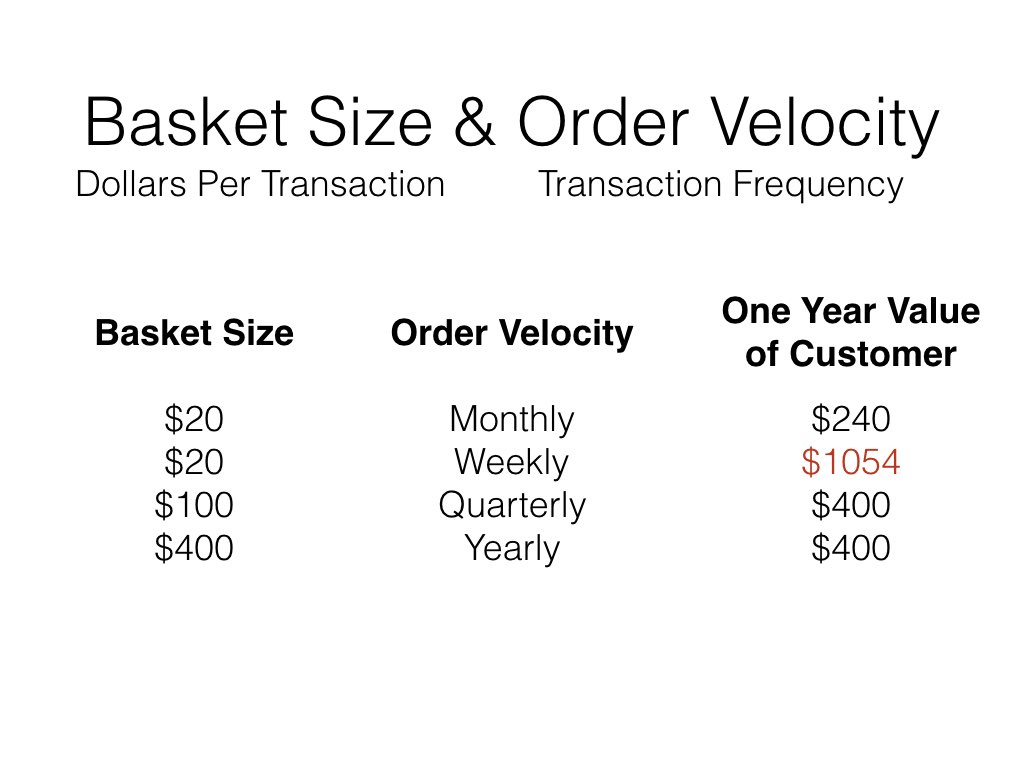
Total Addressable Market
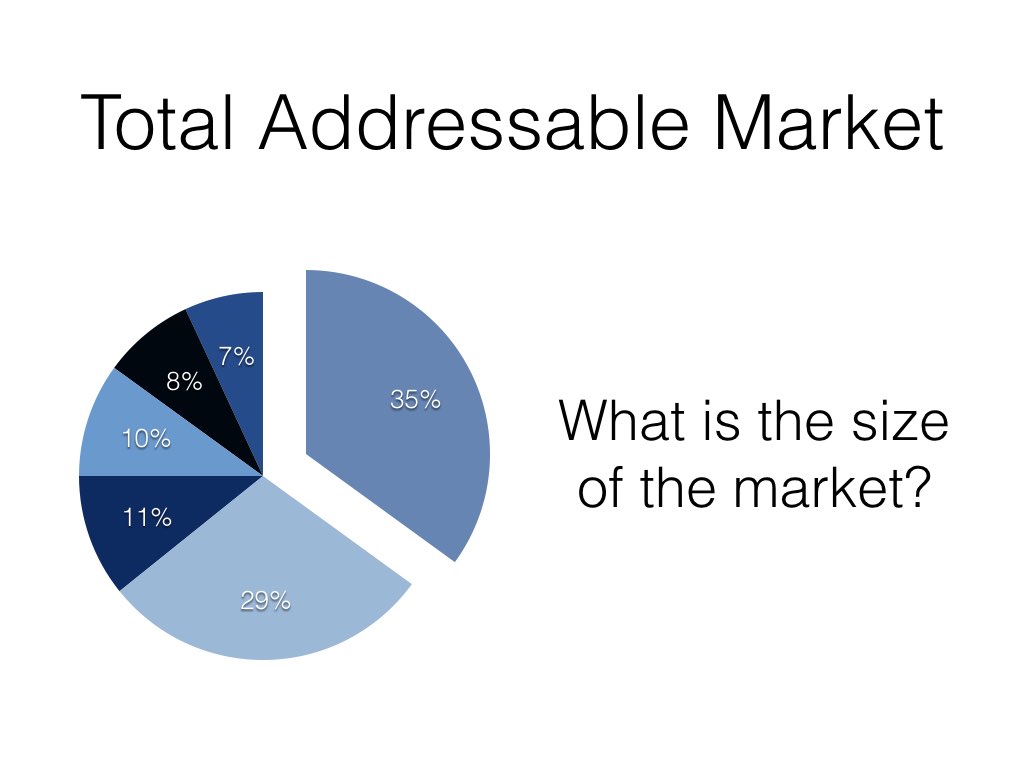
Given all of this,
What
➜ Continue reading...
For those who did not happen to catch them, I wrote two posts on TechCrunch this week:
- Silicon Valley Is Now Public Enemy No. 1, And We Only Have Ourselves To Blame
- http://techcrunch.com/2014/01/28/blowback-silicon-valley-is-now-public-enemy-1/
I will be writing more in the upcoming – drop a line if you have any ideas you would love to see covered.
➜ Continue reading...
In a popular story published in Dealbook, venture capitalist Marc Andreessen discussed his views on the popular virtual currency Bitcoin. The article is a good, decently level-headed discussion on the current Valley thinking about Bitcoin and its potential.
One thing that bothered me though was this line early on in the article: "What technology am I talking about? Personal computers in 1975, the Internet in 1993, and – I believe – Bitcoin in 2014."
References to these sorts of "revolutions" or "waves of technology" are always interesting to me as an on-and-off again historian of science and technology. Revolutions are never point events, but rather process events – they have significant antecedents and gestation periods, and their effects are often time-delayed.
Take the personal computer. It is actually really hard to point to exactly when the PC revolution took place. Was it the launch of a specific model, the development of a particular piece of software, or maybe a particular marketing campaign that made it take off? The answer, of course, is no. The PC developed over two decades (possibly more), and over the years, the hardware and software co-evolved, supporting each other in growth.
Now take the internet. The internet has been in existence since the 1960s, and email has been available since the early 1970s. Andreessen uses the year 1993 as his benchmark, but the National Science Foundation didn't even allow commerce on the internet until 1995. The internet is still evolving today, and it is almost two decades later.
Now, what about Bitcoin? Clearly, the currency has a huge opportunity given the number of digital transactions going across the web. The question I have is more mundane though – how much of an improvement does Bitcoin make over existing transactions, and are there new transactions
➜ Continue reading...

































































